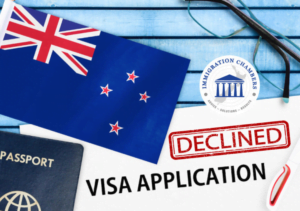The Key to Working in Canada: LMIA-Approved Positions and How to Find Them
How to Find LMIA Jobs in Canada: A Step-by-Step Guide If you intend to work in Canada, having an LMIA-approved position is one of the most significant aspects of the process. Currently there are 1,623 LMIA jobs in existence with a further 11,029 awaiting approval from the Employment and Social Development of Canada (ESDC) which means that, there are indeed opportunities out there if one knows how and where to look. This article provides you with information regarding how to search for LMIA jobs in Canada and additional tips to optimize your search. What is LMIA? A LMIA is a document that Canadian employers who seek to hire a TFW for a given trade require before they do so. When the ESDC decides that usage of a TFW will not negatively impact the Canadian labor market, a positive LMIA is issued. In other words, by engaging in reasonable efforts, the employer was unable to find a candidate for the available position who is either a Canadian permanent resident or a citizen. Why it might be difficult to find LMIA jobs Nevertheless, there are numerous LMIA approved positions and these jobs may not be easily discovered. Some may potentially be created for ESDC requirements alone. However, perseverance is key. Keep on making such applications with the aim of getting a job in one of them.Getting to know LMIA Jobs in Canada: A Definitive BasisStep 1: Check out the Canadan Jobs BankType URL of the Canada Job Bank in the internet browser address bar and then hit the enter button.Step 2: Click on the Temporary Foreign Worker SectionGo below the “Temporary Foreign Worker” option and click on it.Step 3: Identify Open JobsBy clicking on the ‘search button’, the list of available jobs appear.Step 4: It is also important to use filter options.There is a filter list lying on the bottom left part of the screen which can be used to select job location, pay range, language and LMIA status.Step 5: Select with LMIA StatusFind the Labour Market Impact Assessment (LMIA) status line in the listed filters and set ‘LMIA approved’ checkbox.You will then be presented with the list of LMIA approved positions after going through the above mentioned steps. You can apply online for the job and can directly approach the companies to convey your intent for the job or for any question regarding the job title. LMIA job application tips Target Name Companies: It has also emerged that users have had a better experience when going for popular organizations rather than companies with low popularity.Avoid Paying for LMIA: It is unlawful to pay an employer for an LMIA. Avoid such practices.Match Your Career Profile: For instance, only apply for jobs that suit your career path to put your chances of being interviewed and hired forward.Customize Your Resume: When submitting your resume or CV, adapt it to match the job description and demonstrate how you can fill the position. How to Find Employers with a Positive LMIA The list is available on the ESDC website, and it contains the employers who have filed for a positive LMIA every three months. This list can be highly useful when a TFW is on the lookout for a new job or when an individual is considering accepting a job offer. As a matter of course, it is recommended that you visit ESDC’s list of businesses who have had positive LMIA outcomes. LMIA Validity Currently, LMIA is valid for 6 months starting from May 1, 2024, however there might be different rules for construction and health care industry. Conclusion It is not easy to secure an LMIA approved job in Canada, but not impossible especially when one is armed with the right strategies and tools. Refine your search with the help of the filters on the Canada Job Bank website, and improve the application with our suggestions. Continue being peristent and you might be able to get a job in canada that is approved under LMIA.To find more information and the LMIA-positive employers list, one can visit the ESDC website.Given these tips, it is possible to find a job through the LMIA process in Canada and be closer to achieving your career dreams in this lively nation.










